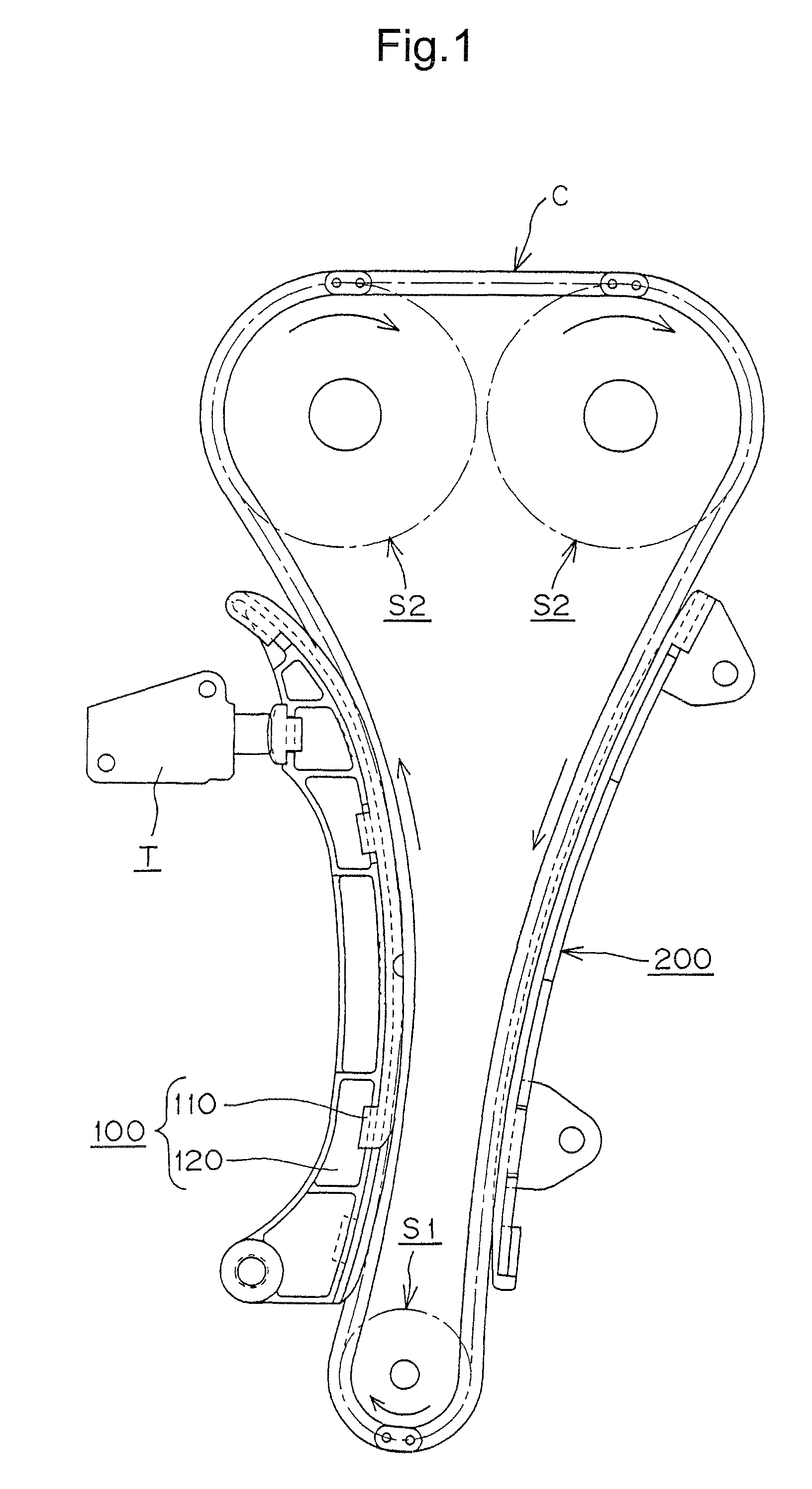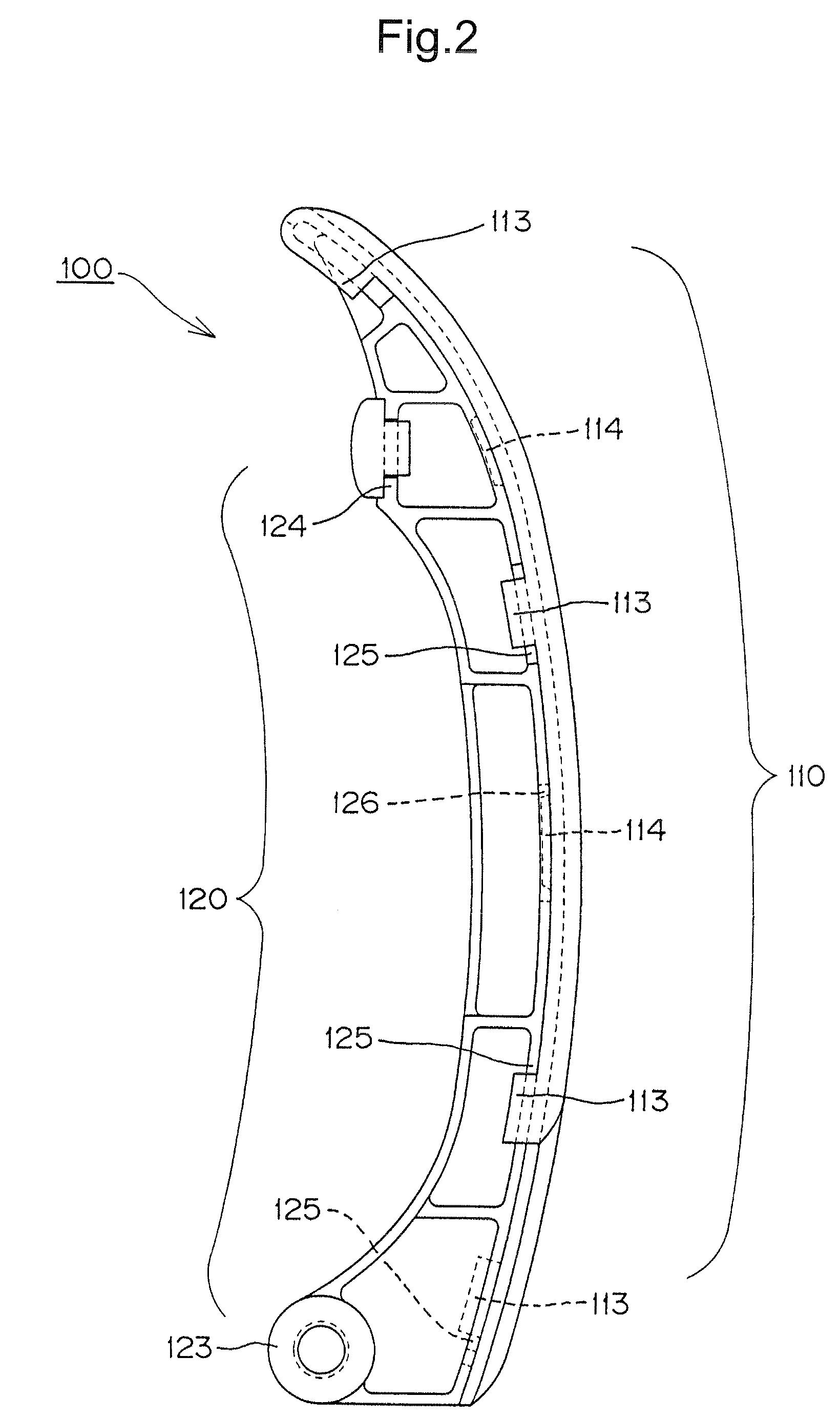Guide for transmission device
a transmission device and guide technology, applied in the direction of belts/chains/gearrings, mechanical equipment, belts/chains/gears, etc., can solve the problems of troublesome high-precision molding of guide materials, shoe disengagement from supporting base, and easy disengagement of shoe support, so as to facilitate assembly and facilitate assembly. , the effect of easy disengagemen
- Summary
- Abstract
- Description
- Claims
- Application Information
AI Technical Summary
Benefits of technology
Problems solved by technology
Method used
Image
Examples
Embodiment Construction
[0030]Here, the guide according to the invention will be described with reference to an embodiment in which the guide is used as a guide for a timing chain in an automobile engine, which transmits power from a driving sprocket on an engine crankshaft to one or more driven sprockets on valve-operating camshafts. The invention is applicable both to a fixed guide on which the chain slides, and to a movable guide, which is used both to guide, and to maintain tension in, the timing chain.
[0031]The principal components of the guide are a shoe and a base frame for supporting the shoe. The shoe is preferably composed of a synthetic resin on which a traveling transmission chain can slide smoothly. Examples of preferred resins are polyamide 6, polyamide 46, polyamide 66, and polyacetal resins. The base frame, is preferably composed of a metal such as aluminum or a synthetic resin material such as glass fiber-reinforced polyamide resin, as these materials exhibit good durability in the high -t...
PUM
 Login to View More
Login to View More Abstract
Description
Claims
Application Information
 Login to View More
Login to View More - R&D
- Intellectual Property
- Life Sciences
- Materials
- Tech Scout
- Unparalleled Data Quality
- Higher Quality Content
- 60% Fewer Hallucinations
Browse by: Latest US Patents, China's latest patents, Technical Efficacy Thesaurus, Application Domain, Technology Topic, Popular Technical Reports.
© 2025 PatSnap. All rights reserved.Legal|Privacy policy|Modern Slavery Act Transparency Statement|Sitemap|About US| Contact US: help@patsnap.com



